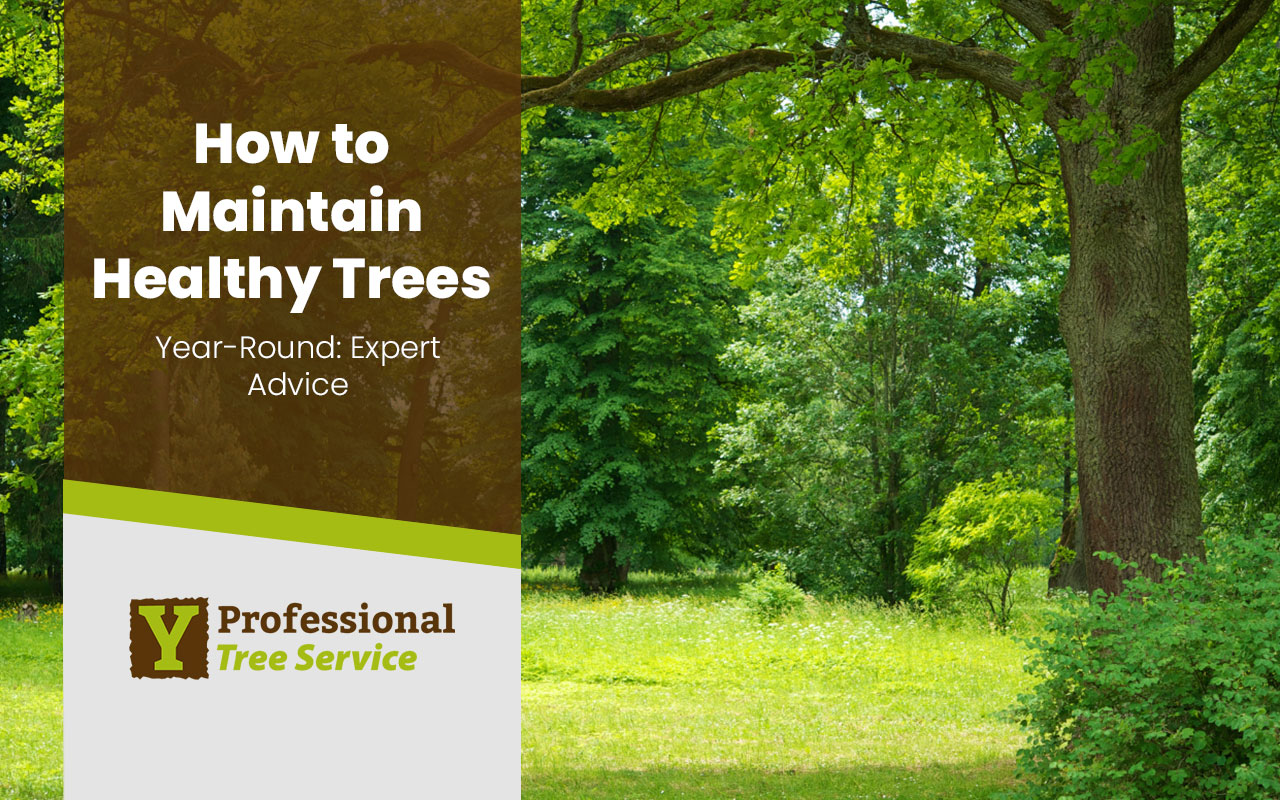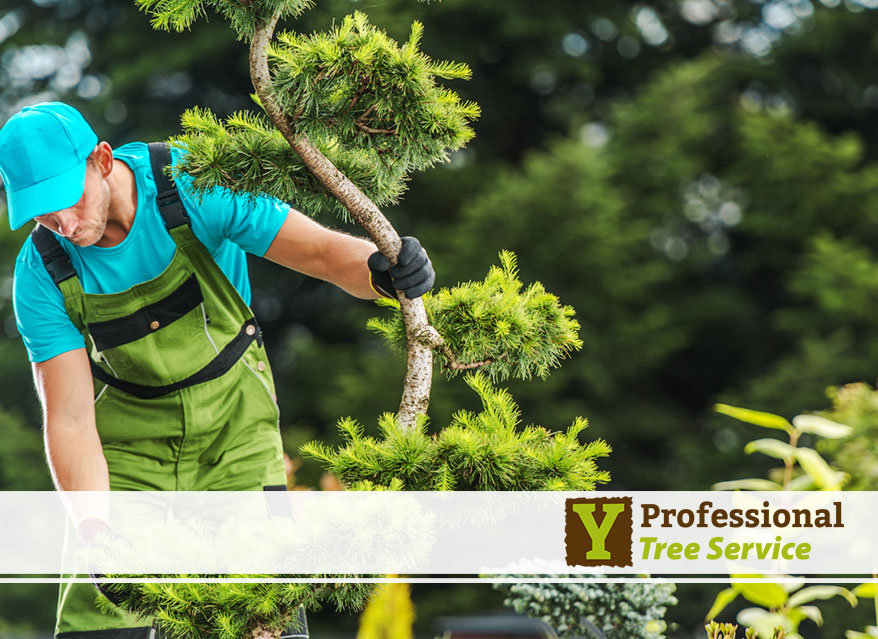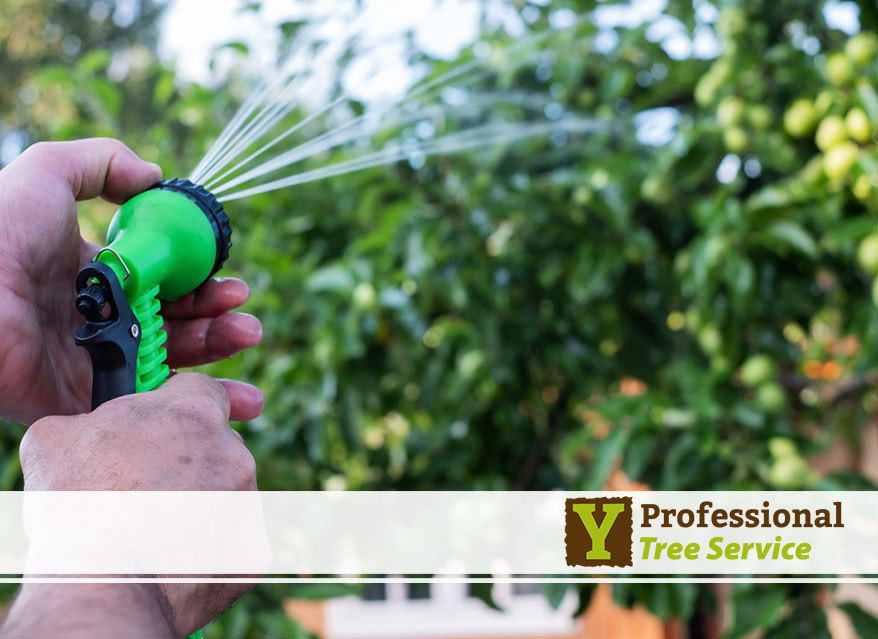
Maintaining healthy trees year-round is essential for any homeowner who values a beautiful and thriving landscape. Learning how to maintain healthy trees can be challenging, especially for busy individuals who want their outdoor spaces to look their best without dedicating too much time to tree care.
Imagine walking into your yard and seeing lush, vibrant trees that enhance your property’s value and provide a serene environment. In this blog, we’ll share expert advice on maintaining healthy trees and ensuring your landscape remains a source of pride throughout the seasons.
How to Maintain Healthy Trees: Expert Tips and Advice
Maintaining healthy trees requires proper care, regular monitoring, and timely interventions. This section will dive deep into actionable steps and expert advice on keeping trees healthy throughout the year. Whether you’re a seasoned gardener or a new homeowner, these tips will help keep your trees strong, beautiful, and resilient.
Understanding Your Tree’s Needs
Every tree is unique, and understanding its needs is the first step in ensuring its health. Factors such as soil type, climate, and species characteristics are crucial in maintaining healthy trees. Assess these elements to customize your care approach, ensuring better growth and longevity for your trees.
Proper Watering Techniques
Watering is essential for tree health, but overwatering or underwatering can cause significant damage. You must understand the right amount of water your trees need based on their species, size, and the current season. Deep watering is better than shallow watering because it promotes deep root growth and drought resistance.
Pruning for Growth and Safety
Pruning is not just about aesthetics; it’s a vital practice for the health and safety of your trees. Regular pruning helps remove dead or diseased branches, promotes better air circulation, and reduces the risk of fungal infections. Additionally, properly pruned trees are less likely to suffer from storm damage. Mastering pruning techniques is a crucial skill when maintaining healthy trees.
Fertilization: When and How to Feed Your Trees
Fertilizing your trees gives them the necessary nutrients to grow strong and healthy. However, applying the right type and amount of fertilizer at the correct time is crucial. Over-fertilization can lead to excessive growth, making trees more susceptible to pests and diseases. Understanding your trees’ nutrient needs will help you make informed decisions about fertilization.
Protecting Trees from Pests and Diseases

Trees are vulnerable to various pests and diseases, which can compromise their health if not addressed promptly. Regular inspections and early intervention are critical in maintaining healthy trees. Proactively recognize common tree pests and diseases to protect your trees and keep them strong year-round.
Seasonal Care Tips

Maintaining healthy trees throughout the year requires adjusting your seasonal care routine. Here’s how to approach tree care each season to ensure your trees remain strong and vibrant.
- Spring:
Inspect for winter damage and prune dead branches. Apply mulch to retain moisture and control soil temperature.
- Summer:
Water deeply in the early morning or late evening. Watch for pests and consider a mid-season fertilizer application.
- Fall:
Remove fallen leaves and prune weak branches. Add mulch to protect roots from freezing.
- Winter:
Protect young trees with burlap or tree guards. Avoid pruning in extreme cold and ensure soil moisture is adequate.
By adapting your tree care practices to the changing seasons, you can ensure that your trees remain healthy and vibrant all year round.
FAQs:
Q: How often should I water my trees?
A: Watering frequency depends on the tree species, soil type, and weather conditions. Typically, deep watering every 1-2 weeks is recommended.
Q: When is the best time to prune my trees?
A: Late winter or early spring is generally the best time for pruning, as it promotes healthy growth and reduces the risk of disease.
Q: Can I fertilize my trees in the summer?
A: Fertilization is best done in early spring or late fall when trees are not under stress from extreme temperatures.
Q: How can I tell if my tree is diseased?
A: Look for signs such as discolored leaves, unusual growth patterns, or pests. If in doubt, consult a tree care professional.
Ensuring Healthy Trees Year-Round
Maintaining healthy trees requires dedication, but the rewards are worth the effort. By following the expert tips outlined in this blog, you now have the knowledge needed on how to maintain healthy trees throughout the year. Remember, a well-maintained tree enhances your property’s beauty and creates a healthier environment.
If you have any questions or need professional assistance, contact us. Let’s work together to keep your trees thriving and your landscape stunning.
